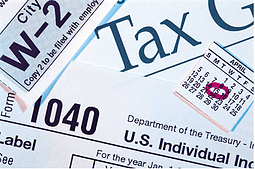When a debt is settled (IRS says, "forgiven") for more than $600, you may receive a form 1099C that seems to say that you are going to have to pay more tax! Here's what you need to do to have the "forgiveness" excluded as additional income:

(Let me start out by stating that I am not an accountant or attorney. I have been helping people deal with creditors, debt collectors, and attorneys for the creditors for many years and have tried to provide assistance to them or their tax preparers in how to deal with a 1099-C form. So, please consult yours!)
Now, in this article/blog, I'm talking about dealing with a 1099-C that you may (or may not) receive after an unsecured debt such as credit cards, personal bank loans, medical bills, etc. has been settled for less than the balance.
By the way, don't be surprised that your tax preparer or accountant is not quite sure what to do with the 1099-C! Or, be careful if they just say that you have to include the settled/forgiven amount as additional taxable income without seeing if it can be excluded!!!!
ALSO, DO NOT IGNORE THE 1099-C, even if you receive it AFTER you have filed!
If this happens, you may have to file an amended form. You accountant or tax preparer will help.
Ok, so you have received the 1099 C.... NOW WHAT?
To help you, here's an actual copy of a 1099C one of my client's received for a debt we helped settled in 2015. (The 2016 1099C's are not out yet, but will be the same.)
Click on the form below and print a copy so you can follow:
It shows...
- The name of the creditor... Capital One
- Client's personal information (I've blacked out for privacy of course)
- Date of the settlement... 1/3/15
- Amount of the canceled debt (amount forgiven) $1,463.68
- Debt Description... Credit Cards and Loans
- 1099-C Instructions for Debtor
The actual balance at the time of settlement was $ 3,440 and the total settlement was for $1,500. Even though this was a reduction of $1,940, the creditor has excluded the added interest and fees in reporting the settlement to the IRS.
Look carefully at the bottom of the form and you will see,
"However, according to IRS Pub. 4681, you may not have to include all of the canceled debt in your income. There are exceptions and exclusions, such as bankruptcy and insolvency."
Do you see the word, "INSOLVENCY"? This is the key to the whole matter.
It means that if at the time the settlement was completed, if your liabilites (all outstanding debts including the one that was settled) were greater than all of your assets (equity in your home, car, cash, bank accounts, etc.), then, according to the IRS, you were INSOLVENT.
So how do you show/prove to the IRS that you were insolvent at the time of the settlement?
You are going to file IRS Form 982 along with your tax return.
But first, you are going to have to do a little "homework"... relax, it's easy...
Although it is not necessary, I advise my clients to write out a BRIEF, LEGIBLE explanation of their situation at the time of the settlement. Again, you don't have to use word processing, but make sure you write very clearly. Something like:
John Smith SS # 123-45-6789 234 Main St. Big City, OR 97033
I lost my job in August of 2014 and did not find employment until a year later. My wife was also very ill at that time.
We used credit cards to try and make ends meet, but ultimately were unable to keep up with the payments. Rather than file for bankruptcy, we tried to negotiate with our creditors for a reduction of the balance.
As you can see from the Assets vs. Liabilities worksheet I've attached, we were in real financial trouble and/or insolvent.
Next, complete a brief worksheet listing your Assets vs. your Liabilities:
Example:
Assets: Liabilities:
FMV of home $ 225,000 Mortgage $190,000 2nd $20,000
FMV of car $ 5,000 Student loans $27,000
Personal Items $ 5,000 Medical Bills $ 4,000
Credit Cards $ 31,000
Total Assets: $ 235,000 Total Liabilities: $ 272,000
Net Worth: negative -$37,000
Now you are going to fill out IRS Form 982 (really, really simple!!!)
For credit card and other unsecured debts, you only have to deal with Part I.
- Check the box on 1,a
- Fill in the amount of forgiveness from 1099C on line 2 ( 1463.68 )
That's it! Nothing to it!
Now, MAKE A COPY OF EVERYTHING....
- The 1099-C
- Your brief explanation of financial hardship
- Your Assets vs. Liabilities worksheet showing Insolvency
- Completed IRS form 982
Finally...
Attach/include, all of the above with your tax return.
If you need more help, click below:





 If you have received a 1099-C, DON'T PAY THE ADDITIONAL TAX until you know your rights!
If you have received a 1099-C, DON'T PAY THE ADDITIONAL TAX until you know your rights!
 What is a 1099-C?
What is a 1099-C?



